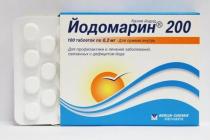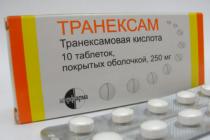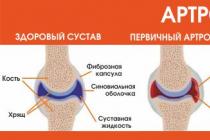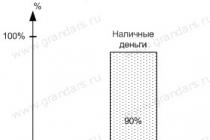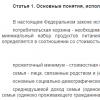Money supply is the most important indicator of the amount of money in circulation. The money supply includes the total amount of money - cash and non-cash, which is currently in circulation, belongs to various economic entities. In addition to money, it may include other highly liquid financial assets that can be converted into money with minimal loss of time and money. These include, for example, certificates of deposit of large commercial banks, short-term treasury bills, Treasury savings bonds. The order in which they are included in the composition of the money supply depends on the national characteristics of its measurement. Thus, the money supply is a heterogeneous indicator in its structure.
To characterize the structure of the money supply, monetary aggregates are used - M0, M1, M2. monetary aggregate is a statistical indicator that characterizes the volume and structure of the money supply.
With all the variety of methods of statistical accounting of the money supply in different countries, monetary aggregates in the most general form can be represented as follows:
М0- includes cash in circulation (banknotes, metallic coins, and in some countries treasury bills), including cash in bank cash desks;
M1- contains the M0 aggregate plus funds in current bank accounts and demand deposits, which can be immediately used either in the function of money as a medium of circulation or as a means of payment;
M2- consists of the M1 aggregate plus fixed-term and savings deposits in commercial banks: funds from these deposits become available to the depositor only after a certain time has elapsed, provided for by the deposit agreement between the bank and its client;
M3- contains the M2 aggregate plus savings certificates in specialized financial and banking institutions;
M4- consists of the M3 aggregate plus shares, bonds, certificates of deposit of commercial banks, bills of individuals and legal entities, i.e. monetary obligations that take a long time to turn into "live" money.
The delimitation of monetary aggregates is based on the degree of their liquidity, i.e. the possibility of quick, with the least risks and costs, the conversion of various forms of deposits and savings into rapidly realizable funds. Monetary aggregates are ranked according to the degree of liquidity decrease. So the monetary aggregates M0 and M1 characterize the most liquid component of the money supply. They include components that fall under the definition of money supply in the narrow sense of the word. Other aggregates of the money supply include money that is used in settlements with certain restrictions. In their essence, they are rather substitutes, or “quasi-money”.
The qualitative composition of monetary aggregates is ambiguous in different countries, which is due both to the traditionally established theoretical ideas about money, the ratio of cash and non-cash components in the total money circulation, money and financial assets, and the specifics of the monetary system and the methods used to regulate it by the central government. bank. So, in the United States, there are 4 main monetary aggregates in the composition of the money supply:
M1- cash in circulation held outside banks, traveler's checks, demand deposits and so-called other checkable deposits;
M2– Aggregate M1 plus non-checkable savings deposits, term deposits in banks, one-day REPO operations (purchase and sale of securities with repurchase and sale), one-day dollar deposits of US residents, funds in mutual fund accounts.
M3- M2 aggregate plus short-term government bonds, term buyout agreements concluded by commercial and savings banks, term Eurodollar deposits of US residents in foreign branches of US banks.
The specificity of the system of monetary aggregates used in the USA is the use of aggregate L, consisting of aggregate M3 plus treasury securities and banker's acceptances placed outside the banking system.
In Japan, central banks use 4 monetary aggregates. However, the widest unit M4 includes, along with cash in circulation, funds on current and term deposits in commercial banks, and also funds invested in one of the types of short-term securities - certificates of deposit.
In France, ten monetary aggregates are used to determine the money supply, in Switzerland and Germany - three, in England - five. Despite the difference in the qualitative composition of monetary aggregates and their different numbers, in recent years there has been a trend towards the universalization of financial markets, which predetermined the gradual convergence of the composition of monetary aggregates.
Each country that is a member of the International Monetary Fund (IMF) calculates the monetary aggregate M1 according to the methodology developed by the Fund - M1 includes cash and all types of checking deposits. Along with it, a broader indicator of the money supply is calculated - “quasi-money”, that is, urgent and savings accounts of banks and the most liquid financial market instruments.
The money supply in the Russian Federation is calculated by the Central Bank as of the 1st day of the month based on the consolidated balance sheet of the banking system. The composition of the money supply in Russia includes the following monetary aggregates:
М0- cash in circulation;
M1- consists of the M0 aggregate plus funds on settlement, current and special accounts of enterprises and organizations, on the accounts of local budgets, budgetary, trade union, public and other organizations, plus State Insurance funds, plus deposits of the population and enterprises in banks, plus demand deposits of the population in Sberbank;
M2- consists of the M1 aggregate plus fixed-term deposits of the population in Sberbank;
M3- consists of aggregate M2 plus certificates and government bonds.
Such a definition of the structure of the money supply increases the activity of money circulation management, as it allows to take into account the degree of pressure of funds in each aggregate on the formation of effective demand, and, consequently, prices in the market of goods and services. In the Russian Federation, the M2 aggregate is used as the main monetary aggregate used in the calculation of current macroeconomic indicators.
In any country, the money supply is the object of constant state regulation. The need for such regulation is determined by the fact that the size of the money supply and the rate of its growth affect the state of other economic indicators. So, for example, if the money supply grows much faster than the volume of national production, then, other things being equal, this can lead to inflation. At the same time, the state resorts to additional money emission in order to stimulate economic growth, and in this case, the increase in the amount of money in circulation reduces the cost of loans and contributes to the expansion of productive investment. If the growth of the money supply does not keep pace with the growth in the volume of national production, then the money in circulation at a constant rate of circulation may not be enough to properly service all payments and settlements, and then the continuity of the national economy may be called into question. Counterparties will simply have nothing to pay each other with, they will not be able to repay the emerging monetary claims. Moreover, the main debtor, as a rule, will be the state. This is what will keep the money supply from growing.
The amount of money needed for circulation depends not only on the volume of economic turnover in the country, but also on the velocity of money circulation. With the acceleration of the turnover of money, it is possible to serve a greater economic turnover with a smaller amount of money as a medium of circulation and a means of payment.
In addition to indicators of the velocity of circulation of the money supply in the Russian Federation, the following are determined:
The rate of return of money to the cash desks of the institutions of the Central Bank of the Russian Federation as the ratio of the amount of money received at the bank's cash desks to the average statistical mass of money in circulation;
The velocity of circulation of money in cash circulation, which is calculated as the ratio of the amount of receipts and issuance of cash to the average annual mass of money in circulation.
In modern economic literature, a generally accepted concept has been formed about the need to single out among the various types of functional money the so-called strongest money, which means the amount of central bank liabilities in relation to the private sector, reflected in its balance sheet. As a development of the concept of “the most powerful money”, the term “ monetary base”, i.e. the total of those liabilities of the central bank towards the private sector that it has the ability to control. The components of the monetary base are banknotes and coins held by the population and in the cash desks of banks, funds of commercial banks deposited with the central bank in the form of required reserves. In the Russian Federation, a “narrow” and “broad” monetary base is calculated. The concept of a narrow monetary base includes the M0 aggregate (cash in circulation), plus cash in banks' cash desks and banks' required reserves in the Bank of Russia. The broad monetary base additionally includes funds of commercial banks on correspondent accounts with the Central Bank of the Russian Federation. Changes in the structure of the monetary base are characterized by an increase in the share of cash in circulation, the preservation of an almost unchanged share of required reserves, with a relative reduction in its other components.
Sources of growth in the monetary base can be both an increase in net international reserves Bank of Russia and the Government of the Russian Federation, as well as the volume of their net domestic assets. In the Russian Federation after 1998, the main source of growth in the monetary base is the increase in net international reserves, which occurs due to the purchase of foreign currency by the Bank of Russia in the domestic market and due to the reduction of the Russian Federation's debt to the IMF. The volume of net domestic assets decreased during this period, mainly as a result of an increase in the balances of budgets of all levels and state non-budgetary funds in the accounts of the Bank of Russia.
The connection between the monetary base and the money supply is carried out through the mechanism money multiplier. By controlling the mechanism of the bank multiplier, the Central Bank expands or narrows the issuing capacity of commercial banks, thereby affecting the volume of money supply in circulation. The Bank of Russia annually, as part of its monetary policy, sets money supply growth targets, which are calculated taking into account the dynamics of GDP and the possible money supply, are considered as. In recent years, in the Russian Federation, the benchmarks for the growth of the money supply (M2 aggregate) were set as intermediate goal monetary policy. They are determined on the basis of such macroeconomic indicators as the dynamics of GDP and the projected growth in consumer prices in the proposed period. In addition, in the conditions of dollarization of the domestic economy, when forecasting the ruble money supply, it is necessary to take into account the possible movement of funds in the foreign currency accounts of all market participants.
In the process of regulating the volume of the money supply, the purchasing power of money is determined, on which the quality of the performance by money of the function of a measure of value and a means of accumulation depends. Only with a stable purchasing power and stability of the monetary unit, money can be effectively used to measure the cost of all goods, to calculate and compare various economic indicators, assess their dynamics, and also create a reliable basis for regulating the economy by monetary methods. The depreciation of money, the decrease in their purchasing power leads to the fact that a stable foreign currency is used as a measure of value in the national economy, ensuring comparability of prices over time. Prices for all goods are set not in national monetary units, but in foreign ones, for example, in dollars. As a store of value, depreciating national money is also being replaced by foreign currency. The population, followed by enterprises and organizations, prefer to keep their savings in foreign currency, most often in dollars. There is a process of "dollarization" of the economy.
The performance of money as a means of circulation and means of payment, of course, also depends on their stability, but to a lesser extent than the other two functions. Experience shows that even with a high degree of depreciation, national money continues to be used as a medium of exchange and a means of payment, since it acts as a "fleeting intermediary", which reduces the losses of settlement participants to a minimum. But at high inflation rates, even a fleeting presence of heavily depreciating money on hand entails tangible losses for their holders. Therefore, in conditions of hyperinflation, money and in the functions of a means of circulation and payment are also being replaced by foreign currency. However, with the relative stability of the purchasing power of money, the quality of their performance of these functions is determined mainly by the efficiency of the payment system.
monetary aggregate- a measure of the amount of money or financial assets classified as money supply
Monetary aggregate M2
Second monetary aggregate M2 has a broader character than the M1 monetary aggregate, since money is used in it in the same way as a store of value. It includes those assets that have a fixed nominal value and can be converted into a means of payment. But directly specified assets cannot be transferred from one person to another. The most familiar to us are deposit accounts, demand savings deposits and term deposits. They do not entitle asset owners to use checks, and demand deposits earn negligible interest. In addition, in the financial markets of developed countries, money market mutual funds, i.e., those intermediaries who submit so-called titles of ownership to the population and buy short-term securities with a fixed interest rate, are included in the M2 monetary aggregate. The resulting profit from these securities passes to the owners of the titles of ownership. While in principle money market funds can be used for payments, this rule is rarely used in practice.
The composition of the monetary aggregate M2 includes highly liquid financial assets, such as time deposits and short-term government securities, which, although they do not function directly as a medium of exchange, are easily converted into cash. This way you can withdraw cash from term deposit at a commercial bank or savings institution. Or you can also request a transfer of funds from such an account to a current account.
It is necessary to pay attention to the fact that each country has its own official definition of the monetary aggregate M2. For example, in the UK, M2 is a measure of the money supply, which includes cash in circulation, private sector sterling current and interest-bearing bank accounts, deposits in building societies and savings banks; in the USA - M1 plus savings accounts, term accounts up to $100,000, one-day Eurodollar deposits, shares of money market mutual funds, etc. Therefore, with a general understanding of the essence of this monetary aggregate, the nuances can vary significantly.
In general, the monetary aggregate M2 is intended not for circulation, but for accumulation, and that is why it is characterized as a liquid means of accumulation. It is the relationship of the state with M2 that causes the need for devaluation and revaluation of the currency.
The monetary aggregate M2 better reflects the relationship of the money supply with other economic variables that appear in
the money exchange equation: M * V =Py, namely with the velocity of money V, the weighted price level P and the real volume of production y. Therefore, since the 1980s, many economists have become inclined to think that the M2 parameter is more suitable as a basis for the theory and conduct of economic policy.
There are, however, other points of view, whose supporters do not consider any of the parameters (M1, M2 and M3) to be optimal, and therefore recommend choosing a monetary aggregate that would be a common weighted aggregate of all liquid assets.
monetary aggregate- a measure of the amount of money or financial assets classified as money supply
In economic theory, the following aggregates of money supply are distinguished:
- M0 - cash;
- M1 - financial assets that can be immediately used for settlements (cash and demand deposits);
- M2 - is formed by adding the aggregate M1 and the most common types of term deposits;
- M3 - is formed by taking into account the M2 aggregate and some types of large term deposits and term agreements on the reverse issue (certificates of deposit, government bonds);
- L is the broadest of all monetary aggregates, generalizing all money and financial assets.
The composition of monetary aggregates is not the same in different countries.
Monetary aggregates are a hierarchical system: each subsequent aggregate includes the previous one. Among themselves, monetary aggregates differ not only in the composition of the money supply, but also in terms of the level of liquidity. The monetary aggregate M0 (cash) has the highest liquidity, M1 liquidity is lower than M0, but higher than M2, since demand deposits must be returned to the depositor at his request, and term deposits can be used by the bank at its own discretion during the entire period deposit and are returned to the depositor only after the expiration of this period.
Monetary aggregate М0
Monetary aggregate M0 is cash - coins and paper money.
Coin, constituting only a small part of the money supply: currently - only 2 or 3% of the total money supply M1. Metal money is "money of convenience" allowing us to make all kinds of small purchases.
All metallic money in circulation in the country is token money. It means that real value- the cost of a metal ingot, from which the coin is actually made, is less than the face value of the coin. This prevents symbolic money from being melted down for the purpose of their profitable sale as gold or silver bars. If, for example, every 50 cent nonet in the US contained 75 cents worth of silver, it would be very profitable to melt it down and sell it as an ingot. Despite the illegality of such actions, 50-cent coins would quickly disappear from circulation. This is one of the potential drawbacks of commodity money. If their value as a commodity exceeds their value as money, they will cease to exist as a medium of exchange.
Paper money makes up about 28% of the money supply ml in economics. In the United States, all billions of dollars of paper money are represented in the form Federal Reserve Notes, that is, notes that are issued by the Federal Reserve Bank with the permission of Congress. Throwing a quick glance at any American money, you will notice the inscription at the top left on the front surface of the banknote Federalreservenote and the sign of the reserve bank that issued it under the inscription.
Monetary aggregate M1
The first monetary aggregate M1 includes cash and transaction deposits, i.e. deposits from which funds can be transferred to others as payments by checks or electronic money transfers. Since in countries with a developed market economy, including those with a modern financial market, most exchange transactions are carried out using the first monetary aggregate, it is called an aggregate in the narrow sense, in which money is used as a medium of circulation.
Bank deposits (deposits) is the largest component of the M1 money supply. There are many financial institutions offering deposit services.
1. Commercial banks. Such banks form the backbone of the system. They accept deposits from individuals and firms and use their financial resources to provide many different types of loans. Commercial bank loans serve as a source of short-term working capital for entrepreneurs and firms, and as a way for consumers to finance the purchase of cars, other durable goods, etc.
2. Savings institutions. Commercial banks are complemented by a host of other financial institutions - savings associations and credit unions - collectively referred to as savings institutions.credit unions accept deposits from their "members"—usually a group of people working for the same company—and provide those funds to finance installment purchases.
Deposits in banks and savings institutions are called differently: demand deposit; NAU account (negotiableorderofwithdrawal (NOW) account); account with automatic transfer of funds, or ATC account (automatictransferservice (ATS) account); checking account. But despite such a variety of names, all these deposits are similar in one thing: depositors can withdraw these funds at any time and for any amount at their own discretion.
For most of the 20th century (until the 1990s), the M1 aggregate was regarded as the most accurate measure of the money supply. However, at present, with the development of credit relations, the dependence of the key parameters of the national economy on the M2 aggregate, which is currently considered as the most important object of monetary policy, has become more obvious.
Monetary aggregates is a generalized name for different categories of cash and non-cash money. The sum of all monetary aggregates is the money supply.
The money supply is all the money issued by the government.
In addition to the money supply, macroeconomists distinguish such an indicator as the monetary base.
The monetary base is the amount of cash in circulation and the obligations of the Central Bank of the state to creditors.
The money supply and the monetary base are two basic general concepts characterizing the state of the state economic system. Monetary aggregates, the money supply and the monetary base are essential for almost all aspects of economic activity in the country and become the object of state regulation, incl. from the main bank of the country.
The methods of influence of the Central Bank on the money supply are diverse. They start with emission, i.e. issuance of the national currency, include ways to stimulate the financial flows that are needed at the moment, a combination of other legislative and financial mechanisms.
Structure of monetary aggregates
Monetary aggregates in the Republic of Belarus and most other countries are classified according to international terminology into M0, M1, M2 and M3.
- M0 is cash. Coins and banknotes in circulation among the population and at the cash desks of organizations, with the exception of banks.
- M1 - the amount of M0, non-cash money in demand deposits and settlement accounts of organizations and entrepreneurs. This money is considered "fast". They are easily set in motion at the request of their owners.
- M2 is a broader indicator. It consists of the M1 aggregate and fixed-term deposits of individuals and legal entities in the national currency. These funds are available without asset sales and exchange transactions. If the sum of all values of securities held by individuals and organizations (except banks) issued in the national currency is added to the M2 indicator, then an intermediate indicator M2 * is obtained.
- M3 - another name - "broad money supply". These are the already listed aggregates M2 (or M2 *), as well as bank deposits in other currencies, investments in precious metals or stones, the value of securities, with the exception of shares.
In addition to the term "broad money supply", the term "active money supply" is also used. It is identical to the M1 unit, i.e. amount of cash and demand deposits. These funds can enter into circulation as quickly as possible and influence economic processes.
What are monetary aggregates for?
Monetary aggregates themselves are conditional values. Which reflect real economic processes and trends.
The value of monetary aggregates is estimated to understand the level of provision of the economy with money. A high score on this criterion may indicate opportunities for rapid growth. Too high - about inflationary risks. Lack of funds with high economic potential makes it possible to issue the national currency without the risk of inflation. Those. additional money will be provided by a comparable increase in production and trade.
Comparison of M0 and other monetary aggregates gives an idea of the degree of involvement of the population's funds in the banking system. A simple comparison is whether this money lies in a money box or generates income from placement in deposits and provides funds for issuing loans.
There are many other more complex dependencies. They are of a general nature, because. the value of cash flows for the economy is comparable to the work of the circulatory system for the body.
If you notice a mistake in the text, please highlight it and press Ctrl+Enter
money supply is the stock of money in the state.
The money supply serves the movement called money circulation.
The totality of all money in a given country with the government, firms, banks, citizens, in accounts, on the road, in wallets, in "stockings", etc. shapes national money supply. Money circulation as a set is divided into cash and non-cash. Non-cash circulation is much higher than cash (Fig. 1):
Rice. 1. The ratio of cash and non-cash money supply inIn countries with an unreliable banking system, the ratio of cash and non-cash money supply looks different (Fig. 2):

The concept of liquidity is used not only in relation to, but also to, the international monetary system, etc. Liquidity in relation to money is their property to be used by their owner for the immediate acquisition of the necessary benefits. Depending on the specific form in which money exists (cash and non-cash), the liquidity of money increases or, conversely, decreases. So, cash is much more liquid than non-cash money, and in the non-cash money supply, money on current accounts that can be used by checks, transfers, credit cards, is much more liquid than money on time deposits, since there is a time limit on the latter during which the account holder does not can use the entire amount of the deposit, but only the interest on it.
Liquidity of various forms of money in order of increasing liquidity:- Money in term and savings bank deposits;
- Money on demand deposits (current) checks, bills of exchange, payment orders, credit cards, electronic money, traveler's checks;
- Cash, banknotes, banknotes, treasury bills, small change, securities;
Money Aggregate System
Since 1992, the Russian Federation has moved to the calculation of monetary aggregates.
The money supply is divided by monetary aggregates(from to), which include various types of money.
Monetary aggregates - a grouping of bank accounts according to the degree of speed of transformation of funds in these accounts into cash. The faster the funds in the accounts can be converted into cash, the more liquid the aggregate is considered.
The system of money supply aggregates is "matryoshka", in which each previous aggregate is "inserted" into each subsequent one.
Monetary aggregate М0
To the unit M 0 includes all types of money with a high degree of liquidity.
Different types of money and different types allow you to introduce a certain classification of money, depending on the degree of their liquidity and scope. This found expression in the creation of a system of money supply aggregates used in the analysis of the national systems of money circulation in various countries. The original unit includes cash and checks:
M 0 = C + checks,
where FROM— initial money supply (cach).
Cash, in turn, consists of paper money, banknotes and tokens.
1st sign. Cash is issued into circulation by the Russian Federation, then the Central Bank of the Russian Federation takes measures to preserve its purchasing power. Thus, cash is a debt obligation of the Central Bank of the Russian Federation, that is, the Central Bank of the Russian Federation guarantees their purchasing power.
2nd sign. Non-cash money on current settlements and other demand and term accounts. These are debt obligations to their customers. At the same time, the Central Bank of the Russian Federation controls and regulates the activities of commercial banks, ensuring the liquidity of commercial banks, that is, the ability to pay their debts.
3rd sign. Banknotes, coins, non-cash money in the form of an entry on accounts in circulation are legal tender. Therefore, they are accepted as payment for contracts according to their functions.
4th sign. Modern money (in the narrow sense of the word) is convenient and acceptable for people to use.
5th sign. M 1 has absolute liquidity, so M 1 banknotes that perform the functions of money.
Monetary aggregate M2
In addition to money, that is, the aggregate, the composition of the money supply includes purchasing and payment means that do not have absolute liquidity. These include bills, bonds, certificates of deposit. In non-cash form: term deposits in bank accounts.
Unit M 2 complements to M 1 term deposits:
M 2 \u003d M 1 + term deposits.
With a term deposit, the account holder transfers his funds to the bank for some time. If necessary, money can be withdrawn from a term deposit before the due date, but the client may experience losses (interest on the deposit has not been paid). This shows that the term deposit is almost money. In the conditions of the Russian Federation, the level of liquidity of the aggregate is close to absolute, therefore, usually, a term deposit is issued to the client on demand.
Funds on time deposits further reduce the liquidity of the aggregate M 2 compared with M 1 and M 0 and involve the maintenance of savings, savings, investments.
Monetary aggregate M3
Unit M 3 involves an increase in the aggregate M 2 at the expense of:
M 3 \u003d M 2 + government securities.
These papers (mainly government bonds) are no longer fully valuable money, but they can still be transformed into other types of money (sold on the open market) and, on this basis, they are included in the money supply (Fig. 3).
The structure of the money supply
The structure of the money supply is constantly changing.
In the modern monetary system, the growth rate of the money supply has noticeably decreased and money began to work better. In the Russian Federation, among the shortcomings of the monetary system, one can note a large share of cash (42-65%), while in developed countries this figure barely reaches 7-10%.
Rice. 3 Structure of the money supply represented by the system of aggregates (from to )
The ratio between aggregates changes depending on economic growth.
The change in the money supply is the result of the influence of two factors:
- change in the amount of money in circulation;
- change in their turnover rate.
Change in turnover rate
The velocity of circulation of money is determined using indirect methods:
Velocity of circulation of money in the circulation of income= GDP / Money supply (M1 and M2). This indicator reveals the relationship between economic growth and money circulation.
Cash turnover rate= Arrival according to the forecast of the balance of cash turnover / the average annual value of the money supply in circulation.
Turnover of money in the payment turnover(shows the speed of non-cash payments) = The amount of funds in the settlement, current and forecast accounts (bank accounts) / the average annual value of the money supply in circulation.
The change in the rate of turnover of money depends on:- general economic factors showing how production is going on, how the cyclical nature of economic development, rising prices, growth rates of the most important sectors of the economy are changing;
- monetary factors: what is the structure of the payment turnover (how much cash and non-cash money is involved), the development of credit operations, the development of mutual settlements, the level of the interest rate on the loan;
- the frequency of payments of money and income, the level of savings and savings, the uniformity of spending money.
The effect of inflation on the growth of the velocity of money is explained by the fact that buyers increase their purchases in order to protect themselves from economic losses due to a decrease in the purchasing power of money.
Rules for regulating the structure of the money supply
It is necessary to divide the money supply by , , , if it is necessary to ensure state regulation of the money supply and prevent the unexpected (rising prices).
When circulating money, it is important not only the amount of absolutely liquid money M1, but also the amount of money M2, which can quickly turn into M1. Also M3 may, under certain conditions, become a means of payment M1.
By distributing the money supply to aggregates, the Central Bank of the Russian Federation influences the money supply M1, increasing it or decreasing it (or restraining its growth).
Example. In the event of high inflation, the Central Bank pursues a policy of reducing the M1 money supply. To do this, the Central Bank sells, on behalf of the government, government securities of a large denomination of other firms, banks, i.e. M1 - M3 (the money supply M1 decreases).
For the population, the Central Bank of the Russian Federation sells securities of a smaller denomination and M1 - M2, the money supply M1 decreases.
rule: if the money goes to the banking system for a term deposit or to the budget, the money supply M1 decreases, the money leaves the sphere of circulation M1.
If the Central Bank of the Russian Federation raised the interest rate at which banks are lending, in turn, commercial banks raise the interest rate on time deposits.
It has become profitable for people (depositors) to make time deposits - M2 increases, and M1 decreases - inflation is contained.
For the term of the deposit, the money was placed at the disposal of the banking system (- M2).
Monetization ratio
An important indicator of the state of the money supply is monetization ratio, equal to
The monetization coefficient allows you to answer the question: is there enough money in circulation? It shows how the gross product is backed by money (or how much money is per ruble of GDP).
The monetization coefficient reaches 0.6, and sometimes close to one. In Russia, this figure barely reaches 0.1.


